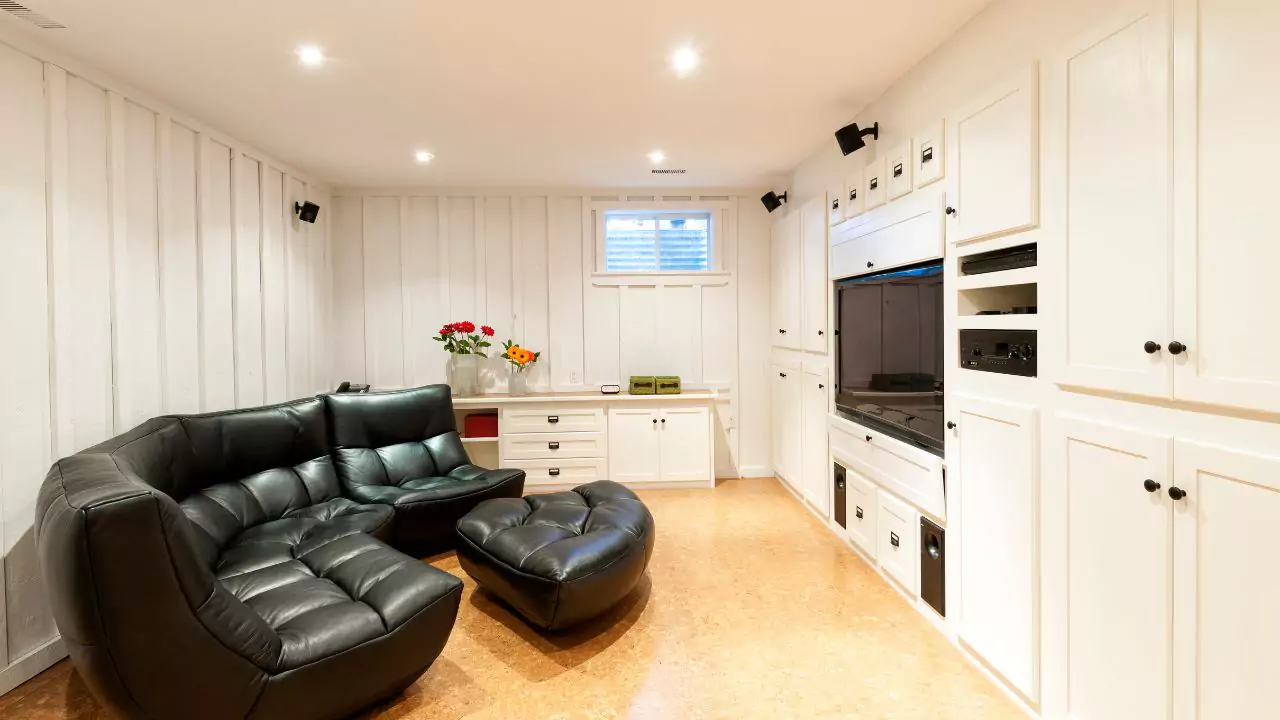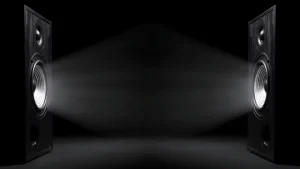If your TV has the necessary output ports, then you can easily connect the ceiling speakers to the TV. This will help you to get better sound and also you will experience an immersive audio output. To connect the TV to ceiling speakers you have to disconnect the TV from the power source, detect the audio output port on the TV, and connect the digital to analog audio converter to the digital audio output port of the TV and to the audio input port of your amplifier. Next, connect the speaker wire to the output port of the amplifier and plug in the TV cable to the power outlet. Finally, play some music to test the connection.
We will walk you through the step-by-step process so that you do not make any mistakes during setting up the audio connection.
In This Article:
Factors to consider while connecting ceiling speakers to TV
If you want to connect ceiling speakers to TV, then there are certain points that you need to consider, such as:
- The speakers’ output must be compatible with the audio input port of the TV, in case you are using a wired connection setup process.
- You must not compare the ceiling speakers with the floor speakers or bookshelf speakers. Ceiling speakers have a different bass response and also the features differ when compared with other types of speakers.
- It is often quite challenging to install a ceiling speaker, so always consider seeking professional help for a successful ceiling speaker installation. Otherwise, your expenditure of buying these ceiling speakers would go in vain and no audio output would be there.
- While buying ceiling speakers, consider the size of the room, so that you can deduce the number of speakers that would be optimum to provide a clear and concise audio output.
Connect the TV to ceiling speakers
If you are trying to connect the TV to ceiling speakers, then you need a digital to analogue audio converter and an amplifier. Now, follow the steps mentioned below:
Step 1: Set up the TV
To start with, you have to disconnect the TV and pull out the cables from the power source. Next, locate the audio output port of the TV which is usually at the backside of the TV. Otherwise, you can also check the left or right bezel of the TV.
Step 2: Get the converter
You need to use the digital to analog audio converter. Plug one end of the converter into the digital audio output of the TV and the other into the audio input port of the amplifier. Next, you have to check whether the connection is successful and the cables are seated in the port perfectly.
Step 3: Connect the ceiling speakers
To connect the ceiling speakers you have to detect the speaker wires. Now, one end of the speaker wire will be connected to the output port of the amplifier and the other end will be connected to the ceiling speaker.
Step 4: Power on the TV
When you are sure that you have successfully connected the speaker wires and the converter cables. Now, you have to plug in the TV cable to the power outlet, press the power button of the TV and turn it on.
Step 5: Test the connection
After turning on the TV you need to play some audio content on the TV to check if the sound is coming appropriately from the speakers. If not, then you have to go through the connection process again. You can also power cycle the TV and then try to connect the TV to the ceiling speaker.
Can you directly connect the ceiling speakers to the TV?
Connecting ceiling speakers directly to the TV seems to be necessary if you have a home theater system. Usually, ceiling speakers have a receiver, multiple speakers, and an amplifier set. So, you can also use the wire that comes through the ceiling speaker to directly connect the TV. If your TV is of an older model and has left and right channel audio output, then you can successfully connect the ceiling speaker wire with the TV. You can do this by looking for the labels L and R on the two audio outputs.
Thus, you can easily connect the TV to the ceiling speakers by establishing a direct connection through the speaker. However, you must check whether the speaker wires are long enough so that you establish a successful connection to the TV from the ceiling speakers.
Can you connect ceiling speakers to a TV without a receiver?
Yes, you can connect ceiling speakers to a TV without any receiver only if the speakers are already installed in your home. So, instead of the receiver, you can replace the device with an audio transmitter. Thus, you can successfully establish a wireless connection instead of a wired connection.
Here are the steps that you need to follow to connect the ceiling speaker to the TV without a receiver:
- At first, you need to connect the TV to the Bluetooth transmitter and for that, you have to use an HDMI cable or an optical cable. The choice of cable is based on the availability of ports on your TV.
- Now, check whether the connection for the Bluetooth transmitter has been successful.
- Next, you have to pair the ceiling speakers with the setup, and for that, you have to press and hold the Bluetooth button on the speaker and also on the transmitter.
- Check whether the Bluetooth transmitters are connected to the ceiling speakers successfully.
- You have to verify the connection and for that try to play any audio or as an alternative, you can watch your favorite show or movie on the TV.
- If the connection proves to be successful then you will achieve a great sound experience through the ceiling speakers.
Can you connect ceiling speakers to the TV using WISA?
Yes, you can also connect ceiling speakers to your TV using WISA. Basically, WISA stands for wireless speaker technology. Through this feature, you can connect multiple speakers to the TV. The most beneficial aspect is that you don’t need any cables running from here and there to establish a successful connection. However, before you proceed with the connection you need to take a few points into consideration.
Points to remember
You need to check whether the ceiling speakers support WISA or are enabled with the WISA feature. However, it is true that being the latest technology only a few speakers have WISA features equipped in them. So, either you have to choose the latest speaker model or drop the idea of connecting the speakers to the TV via this process.
Next, you also have to check whether the TV has a WISA compatible audio output. In case it does, then you need to purchase a transmitter and a receiver. This will help you to establish a successful connection between the TV and the ceiling speaker.
How to connect?
To establish a connection between the TV and the ceiling speaker you need to enable WISA. All you have to do is connect the WISA transmitter with the ceiling speaker at one end and the other end should be connected to the TV. Now, you can play any audio to check whether the ceiling speakers are functioning without any issues.
Can you connect the ceiling speaker to the TV using a soundbar?
Yes, you can connect a ceiling speaker to the TV using a soundbar. This connection would help you to experience an audio output similar to the home theater. Follow the steps mentioned below to establish a proper connection:
- You need to connect the TV to the soundbar. Usually, soundbars have one HDMI input. So, locate the HDMI input of the TV and plug in the cables from the soundbar to the TV’s audio HDMI input port.
- Now, you have to connect the ceiling speakers to the sound bar. You need to locate the speaker wire input port. Use the speaker wire and connect the speaker to the sound bar.
- Finally, check if you have connected the cables to the designated ports and also check whether they are seated properly.
- You have to configure the setup of the sound system through the menu settings of the TV. Follow the on-screen prompts based on the TV model and a secured connection will be established.
- Play any audio file or any video content on the TV to test the connection.
How many ceiling speakers can you connect to a TV?
Usually, you can connect one compatible ceiling speaker to the TV. However, these numbers tend to change based on various factors, such as – the size of the room, personal preferences, type and model of the TV. You can connect at most two speakers if you have a small room. However, for big rooms, you need at least four or more ceiling speakers. We would suggest at first opting for two speaker connections and testing the audio output quality and experience. Next, if required you can easily increase the sound by connecting more speakers.




